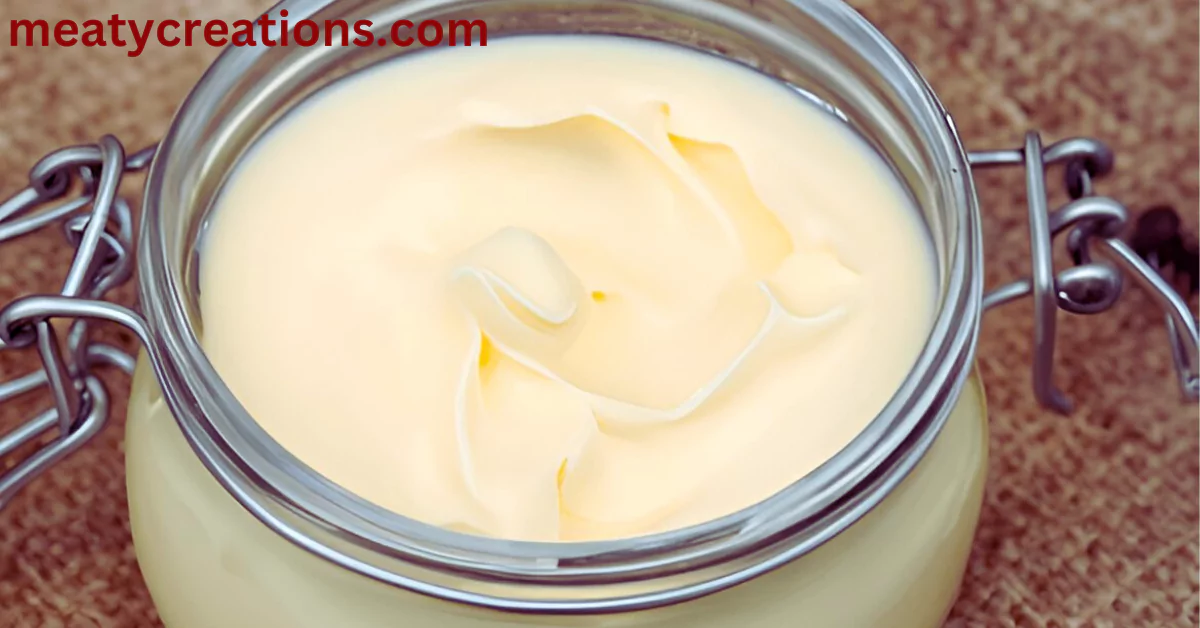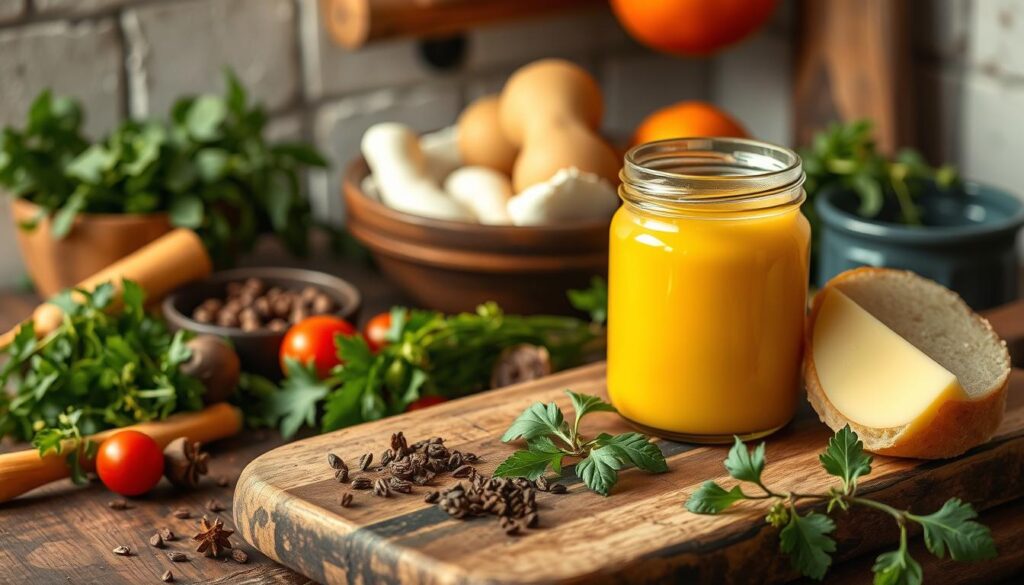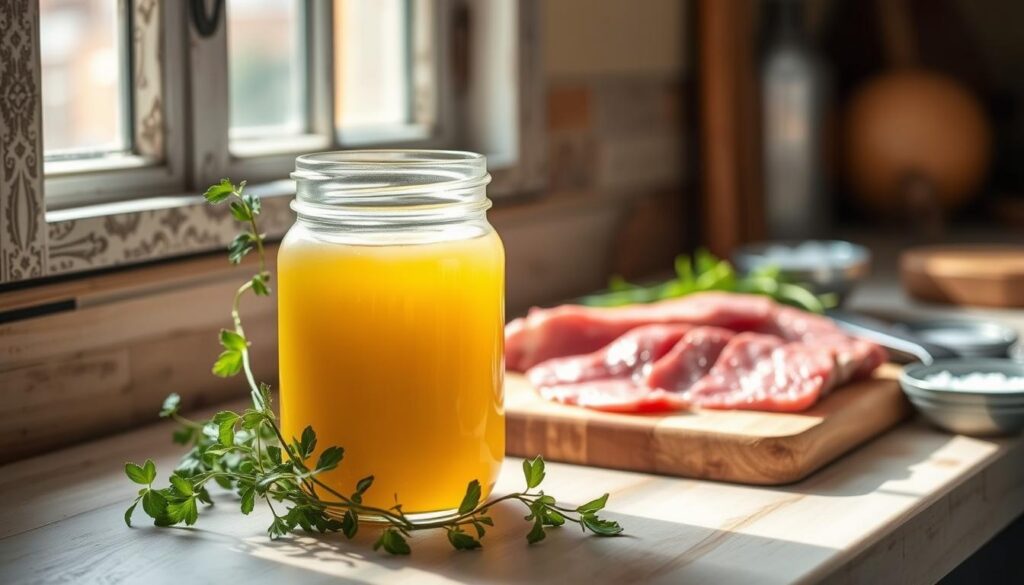The Ultimate Guide to Grass Fed Beef Tallow: A Chef’s Perspective

As a chef, I’m thrilled to share my insights on grass fed beef tallow. This ingredient has changed my cooking for the better. It’s gained fame for its health perks and cooking versatility. Here, I’ll cover what grass-fed tallow is, its benefits, and how to use it in cooking.

I’ve seen the good of grass fed beef tallow in my kitchen. I’m excited to pass on my knowledge to you. It’s packed with nutrients and offers unique ways to cook. Let’s explore grass fed beef tallow together, from its definition to cooking tips.
Why I Choose Grass Fed Beef Tallow in My Professional Kitchen
I’ve always wanted to use the best ingredients in my cooking. Discovering grass fed beef fat changed everything. Now, I use pasture-raised beef tallow in my kitchen. It’s made my dishes taste and feel better.
Many chefs and home cooks have seen great results with grass fed beef tallow. They say it makes their cooking better and their customers happier. The benefits of pasture-raised beef tallow include:
- Rich, buttery flavor
- High smoke point, making it ideal for frying and sautéing
- Rich in nutrients, including vitamins and minerals
My Journey with Traditional Cooking Fats
I started trying different animal fats, like lard and duck fat. But grass fed beef tallow was the best for my kitchen.
The Transformation in My Cooking Results
My cooking has changed a lot. My dishes now taste richer and are tender. I also waste less food because the pasture-raised beef tallow enhances flavors.
Customer Feedback and Recognition
My customers love the taste and quality of my dishes. Food critics have also noticed. They praise my use of grass fed beef fat and pasture-raised beef tallow.
Understanding Grass Fed Beef Tallow: Definition and Origins
As a chef, I’ve always been drawn to organic beef tallow‘s rich history and cultural importance. It’s a rendered fat from grass-fed cattle, used for centuries in many cuisines. Making all-natural beef tallow involves rendering fat from these cattle, creating a high-quality cooking fat with a distinct flavor and nutritional benefits.
The history of grass-fed beef tallow goes back to ancient times. Back then, cattle were raised on grasslands, and their fat was used for cooking. Today, organic beef tallow is made using traditional methods, focusing on sustainability and animal welfare. Using all-natural beef tallow offers several benefits:
- It has a high smoke point, perfect for frying and sautéing.
- It’s rich in nutrients, including vitamins and conjugated linoleic acid (CLA).
- It adds a unique flavor and aroma to dishes.
In my kitchen, I always choose organic beef tallow for its quality and taste. It’s perfect for making hearty stews or searing steaks. With its rich history, cultural importance, and health benefits, organic beef tallow is a must-have in any kitchen.
The Superior Benefits of Grass Fed Beef Tallow
As a chef, I’ve worked with many cooking fats. But grass fed beef tallow stands out. It’s packed with nutrients, good for the planet, and versatile in the kitchen. It has more conjugated linoleic acid (CLA) and omega-3 fatty acids than other fats.
Grass fed beef tallow offers many benefits. Here are some of them:
- Rich in nutrients: It’s full of vitamins A, D, E, and K.
- Environmentally friendly: It supports sustainable farming and lowers the environmental impact of livestock farming.
- Culinary versatility: It’s great for frying, sautéing, and making pastry dough. It adds a special flavor and texture to dishes.
Using premium beef tallow like grass fed has improved my cooking. I highly recommend it for its health and environmental benefits. It’s a top choice for both home cooks and professional chefs.
FOR MORE INFORMATIONS WATCH VIDEO
How to Source the Highest Quality Grass Fed Beef Tallow
Finding top-notch grass fed beef tallow requires looking at reputable suppliers. Make sure to check the labels and certifications. Look for suppliers that focus on grass-fed tallow and are open about their process.
Here are some key things to consider:
- Look for certifications like American Grassfed Association (AGA) or Certified Humane
- Check the label for any added preservatives or fillers
- Research the supplier’s farming practices and commitment to sustainability
A trustworthy supplier will share details about their grass fed beef tallow production. You can also read online reviews and ask for recommendations from chefs or food lovers.
Brands like White Oak Pastures and Alderspring Ranch are known for their quality grass-fed tallow. They focus on sustainable farming and offer grass fed beef tallow that’s full of nutrients and flavor.

By doing your homework and choosing a reliable supplier, you’ll get the best grass fed beef tallow for your recipes. Whether you’re a pro chef or a home cook, using premium grass-fed tallow can make your dishes stand out with a unique taste.
| Supplier | Certifications | Production Process |
|---|---|---|
| White Oak Pastures | AGA, Certified Humane | Regenerative farming practices |
| Alderspring Ranch | AGA, Certified Humane | Grass-fed, no added preservatives |
The Science Behind Grass Fed Beef Tallow’s Stability
As a chef, I’ve always been intrigued by grass fed beef fat. It has a high smoke point and doesn’t oxidize easily. This makes it perfect for cooking at high temperatures. Using pasture-raised beef tallow in my kitchen has changed the game. It adds unmatched flavor and texture to my dishes.
The benefits of grass fed beef fat are many:
- Smoke point: Its high smoke point is great for frying and sautéing. It can handle high heat without breaking down.
- Chemical structure: The unique chemical makeup of grass fed beef tallow makes it stable. It resists oxidation and spoilage well.
- Oxidation resistance: This resistance prevents off-flavors and unpleasant textures. It keeps dishes fresh and flavorful.
Using grass fed beef fat has elevated my cooking. It makes dishes not only tasty but also healthy and sustainable. By understanding its stability, chefs and home cooks can fully appreciate its benefits. This leads to creating exceptional culinary experiences.
My Favorite Culinary Applications
I’ve tried many dishes with organic beef tallow and all-natural beef tallow. I’m excited to share my top picks. From roasted veggies to seared meats and baked treats, the options are vast.
Here are some of my go-to uses for organic beef tallow:
- Roasting Brussels sprouts with all-natural beef tallow, salt, and pepper
- Searing steaks with organic beef tallow and herbs for extra taste
- Baking flaky pastry crusts with all-natural beef tallow instead of butter
Remember, a little all-natural beef tallow goes a long way. Start with small amounts and adjust to taste. The flavor is rich. With organic beef tallow, the sky’s the limit. I encourage you to try new recipes and find your favorite uses.
Storage and Handling Best Practices
Keeping premium beef tallow fresh is key. As a chef, I know that grass finished tallow needs special care. This includes watching the temperature, choosing the right container, and knowing how long it lasts.
Storing grass finished tallow in a cool, dry spot is important. Keep it away from sunlight and heat. This stops it from going bad and keeps it good for longer.
Container Selection
Choosing the right container is crucial. Glass or stainless steel airtight containers are best. They keep moisture and bad stuff out, keeping the tallow’s good stuff in.
Shelf Life Guidelines
Grass finished tallow can last months if stored right. But, always check it for bad smells or mold. Following these tips helps keep your tallow quality and fresh for cooking.
- Always handle the tallow with clean utensils and equipment
- Keep the tallow away from strong-smelling foods, as it can absorb odors easily
- Use the tallow within a few months of opening, or store it in the freezer for longer-term storage
By following these tips, your premium beef tallow stays fresh and tasty. It’s a great addition to your cooking.
Common Mistakes to Avoid When Using Beef Tallow
As a chef, I’ve found that grass fed rendered fat can really boost dish flavors. But, there are mistakes to steer clear of when using beef tallow. One big error is using low-quality products. Grass fed beef tallow is better because of its health benefits and taste.
To make the most of grass fed beef tallow, proper storage is key. Keep it in a sealed container and in a cool, dry spot. Another mistake is not using the right amount. Here are some tips to keep in mind:
- Always choose high-quality grass fed rendered fat for the best flavor and nutritional benefits.
- Store grass fed beef tallow in an airtight container to prevent oxidation and spoilage.
- Use the right proportions of grass fed beef tallow in your recipes to achieve the perfect balance of flavor and texture.
By following these tips and avoiding common mistakes, you can unlock the full potential of grass fed beef tallow in your cooking. Whether you’re a professional chef or a home cook, using high-quality grass fed rendered fat can make a big difference in your dishes’ taste and quality.
Remember, the key to getting the most out of grass fed beef tallow is to use it wisely and avoid common mistakes. With a little practice and patience, you can become a master of using grass fed rendered fat in your cooking.
Comparing Grass Fed vs Conventional Beef Tallow
Choosing between grass-fed and conventional beef tallow can be tough. As a chef, I’ve worked with both. Grass-fed tallow is better for you and tastes better. It comes from cows that eat grass, not grains.
Grass-fed tallow has more omega-3s and CLA, good for your heart and immune system. Conventional tallow has more saturated fats and less of these good fats. Grass-fed tallow also has more vitamins A, D, E, potassium, and magnesium.
Nutritional Differences
- Higher in omega-3 fatty acids
- Higher in conjugated linoleic acid (CLA)
- Lower in saturated fats
- Rich in vitamins A, D, and E
- Rich in minerals like potassium and magnesium
Even though conventional tallow is cheaper, grass fed beef fat is worth the extra money. It’s healthier and tastes better. It’s also great for cooking at high heat. Whether you’re a pro chef or cooking at home, choose grass-fed tallow.
Price Considerations
Grass-fed tallow might cost more, but it’s not a big difference. It’s about $10-15 per pound, while conventional is $5-10. But the health benefits and better taste make it a good investment.
| Type of Tallow | Price per Pound |
|---|---|
| Grass-fed Tallow | $10-15 |
| Conventional Tallow | $5-10 |
Sustainable Practices in Tallow Production
As a chef, I focus on using top-notch ingredients. These must be tasty and good for the planet. Pasture-raised beef tallow is a key choice for me. I seek out producers who use regenerative farming and rotational grazing.
These methods help the soil, bring in more life, and save water. This makes the tallow better for our planet.
Some makers of tallow are all about being green. They use organic beef tallow without harmful chemicals. They also keep the tallow’s natural taste and nutrients by processing it lightly.
By backing these eco-friendly tallow makers, we help the food world be greener. We also cut down on harm to our environment.
Here are some key benefits of sustainable tallow production:
- Regenerative farming practices promote soil health and biodiversity
- Rotational grazing reduces the need for synthetic fertilizers and pesticides
- Minimal processing preserves the natural nutrients and flavor of the tallow
Choosing pasture-raised beef tallow and organic beef tallow from eco-conscious producers is smart. It means we get a healthier, tastier product. Plus, we support the earth.
As a chef, I’m all in on using these quality ingredients. I aim to make my kitchen and the food world more sustainable.
Conclusion: Elevating Your Cooking with Grass Fed Beef Tallow
Grass-fed beef tallow is a game-changer in the kitchen. It’s packed with nutrients and adds amazing flavor to any dish. This premium beef tallow is perfect for cooking steaks, roasting veggies, or baking pastries.
Try using grass finished tallow in your cooking. It will change how your food tastes and feels. Its high smoke point makes it a great choice for many recipes.
Choosing grass-fed beef tallow boosts your cooking and supports eco-friendly farming. It’s a win-win for your taste buds and the planet. Start using it today and see your cooking skills soar.
FAQ
Grass-fed beef tallow comes from cattle fed on grass, not grains. This makes it healthier and tastes better than tallow from grain-fed cattle.
Grass-fed beef tallow is great for cooking because it has a high smoke point and doesn’t spoil easily. It also tastes rich and has healthy fats like omega-3s. Plus, it’s better for the environment than many oils.
Look for organic, non-GMO, pasture-raised tallow. Choose suppliers who care about sustainable farming. This ensures you get the best quality.
Keep it cool and dark, like the fridge or pantry. Use an airtight container. Avoid heat, light, and air to prevent spoilage.
Don’t use bad tallow, and adjust cooking temperatures. Use the right amount. Store it well to keep it fresh and tasty.
Grass-fed tallow is better, with more omega-3s and less saturated fats. It tastes cleaner and works well in hot cooking.
Producers use regenerative farming like rotational grazing. This improves soil and biodiversity. They also aim for minimal processing and packaging to reduce waste.
more Topics:
Alternatives to Beef Hearts: A Chef’s Complete Guide
Beef Heart : Discover the Nutritional Benefits
Beef Cuts Diagram: The Comprehensive Guide
